Selective Finite Memory Structure Filtering Using the Chi-Square Test Statistic for Temporarily Uncertain Systems
Abstract
Featured Application
Abstract
1. Introduction
2. Finite Memory Structure Filter from the Conditional Density of the Current State Given Finite Measurements
3. Selective FMS Filtering with Two Kinds of Measurement Windows
3.1. Temporary Model Uncertainty and Window Length
3.2. Detecting Uncertainty and Selecting Valid Estimate Using Chi-Square Test Statistic
4. Extensive Computer Simulations
4.1. F404 Gas Turbine Aircraft Engine and Electric Motor Systems
4.2. Model Uncertainties
4.3. Discussion of Simulation Results
5. Conclusions
Funding
Acknowledgments
Conflicts of Interest
References
- Ardakani, M.; Askarian, M.; Shokry, A.; Escudero, G.; Graells, M.; Espuña, A. Optimal features selection for designing a fault diagnosis system. Comput. Aided Chem. Eng. 2016, 38, 1111–1116. [Google Scholar]
- Van, M.; Kang, H.J. Two-stage feature selection for bearing fault diagnosis based on dual-tree complex wavelet transform and empirical mode decomposition. Proc. Inst. Mech. Eng. Part C J. Mech. Eng. Sci. 2016, 230, 291–302. [Google Scholar] [CrossRef]
- Hui, K.H.; Ooi, C.S.; Lim, M.H.; Leong, M.S.; Al-Obaidi, S.M. An improved wrapper-based feature selection method for machinery fault diagnosis. PLoS ONE 2017, 12, e0189143. [Google Scholar] [CrossRef] [PubMed]
- Vora, S.; Yang, H. A comprehensive study of eleven feature selection algorithms and their impact on text classification. In Proceedings of the 2017 Computing Conference, London, UK, 18–20 July 2017; pp. 440–449. [Google Scholar]
- Rajab, K.D. New hybrid features selection method: A case study on websites phishing. Secur. Commun. Netw. 2017, 2017, 9838169. [Google Scholar] [CrossRef]
- Cai, J.; Luo, J.; Wang, S.; Yang, S. Feature selection in machine learning: A new perspective. Neurocomputing 2017, 300, 70–79. [Google Scholar] [CrossRef]
- Yang, C.; Mohammadi, A.; Chen, Q.W. Multi-sensor fusion with interaction multiple model and chi-square test tolerant filter. Sensors 2016, 16, 1835. [Google Scholar] [CrossRef]
- Kang, C.W.; Park, C.G. A soft-failure detection and identification algorithm for the integrated navigation system of lunar lander. Proc. Inst. Mech. Eng. Part G J. Aerosp. Eng. 2016, 230, 2023–2035. [Google Scholar] [CrossRef]
- Grewal, M. Applications of Kalman filtering in aerospace 1960 to the present. IEEE Control. Syst. Mag. 2010, 30, 69–78. [Google Scholar] [CrossRef]
- Terejanu, G.A. Discrete Kalman Filter Tutorial; University at Buffalo Department of Computer Science and Engineering: Buffalo, NY, USA, 2013. [Google Scholar]
- Auger, F.; Hilairet, M.; Guerrero, J.M.; Monmasson, E.; Orlowska-Kowalska, T.; Katsura, S. Industrial applications of the Kalman filter: A review. IEEE Trans. Ind. Electron. 2013, 60, 5458–5471. [Google Scholar] [CrossRef]
- Barrau, A.; Bonnabel, S. Invariant Kalman filtering. Annu. Rev. Control. Robot. Auton. Syst. 2018, 1, 237–257. [Google Scholar] [CrossRef]
- Shmaliy, Y.S.; Zhao, S.; Ahn, C.K. Unbiased finite impulse response filtering: An iterative alternative to Kalman filtering ignoring noise and initial conditions. IEEE Control. Syst. Mag. 2017, 37, 70–89. [Google Scholar]
- Shmaliy, Y.S.; Neuvo, Y.; Khan, S. Review of unbiased FIR filters, smoothers, and predictors for polynomial signals. Front. Signal Process. 2018, 2, 1–29. [Google Scholar]
- Zhao, S.; Huang, B.; Shmaliy, Y. Bayesian state estimation on finite horizons: The case of linear statespace model. Automatica 2017, 85, 91–99. [Google Scholar] [CrossRef]
- Zhao, S.; Shmaliy, Y.S.; Ahn, C.K.; Luo, L. An improved iterative FIR state estimator and its applications. IEEE Trans. Ind. Inform. 2019, 1–8. [Google Scholar] [CrossRef]
- Vazquez-Olguin, M.; Shmaliy, Y.; Ibarra-Manzano, O. Distributed unbiased FIR filtering with average consensus on measurements for WSNs. IEEE Trans. Ind. Inform. 2017, 13, 1140–1147. [Google Scholar] [CrossRef]
- Kwon, B.K.; Han, S.; Han, S. Improved receding horizon fourier analysis for quasi-periodic signals. J. Electr. Eng. Technol. 2017, 12, 378–384. [Google Scholar] [CrossRef]
- Pak, J.M.; Kim, P.S.; You, S.H.; Lee, S.S.; Song, M.K. Extended least square unbiased FIR filter for target tracking using the constant velocity motion model. Int. J. Control. Autom. Syst. 2017, 15, 947–951. [Google Scholar] [CrossRef]
- Kim, P.S. A design of finite memory residual generation filter for sensor fault detection. Meas. Sci. Rev. 2017, 17, 75–81. [Google Scholar] [CrossRef][Green Version]
- You, S.H.; Ahn, C.K.; Shmaliy, Y.S.; Zhao, S. Minimum weighted Frobenius norm discrete-time FIR filter with embedded unbiasedness. IEEE Trans. Circuits Syst. II Express Briefs 2018, 65, 1284–1288. [Google Scholar] [CrossRef]
- Xu, Y.; Ahn, C.K.; Shmaliy, Y.S.; Chen, X.; Bu, L. Indoor INS/UWB-based human localization with missing data utilizing predictive UFIR filtering. IEEE/CAA J. Autom. Sin. 2019, 6, 952–960. [Google Scholar] [CrossRef]
- Kim, P.S. Finite memory structure filtering and smoothing for target tracking in wireless network environments. Appl. Sci. 2019, 9, 2872. [Google Scholar] [CrossRef]
- Matko, V.; Milanović, M. Temperature-compensated capacitance–frequency converter with high resolution. Sens. Actuators A Phys. 2014, 220, 262–269. [Google Scholar] [CrossRef]
- Matko, V.; Brezovec, B. Improved data center energy efficiency and availability with multilayer node event processing. Energies 2018, 2018, 2478. [Google Scholar] [CrossRef]
- Eustace, R.W.; Woodyatt, B.A.; Merrington, G.L.; Runacres, A. Fault signatures obtained from fault implant tests on an F404 engine. J. Eng. Gas Turbines Power 1994, 116, 178–183. [Google Scholar] [CrossRef]
- Messner, B.; Tilbury, D.; Hill, R.; Taylor, J.D. DC Motor Speed: System Modeling: Control Tutorials for MATLAB and Simulink (CTMS); University of Michigan: Ann Arbor, MI, USA, 2017. [Google Scholar]
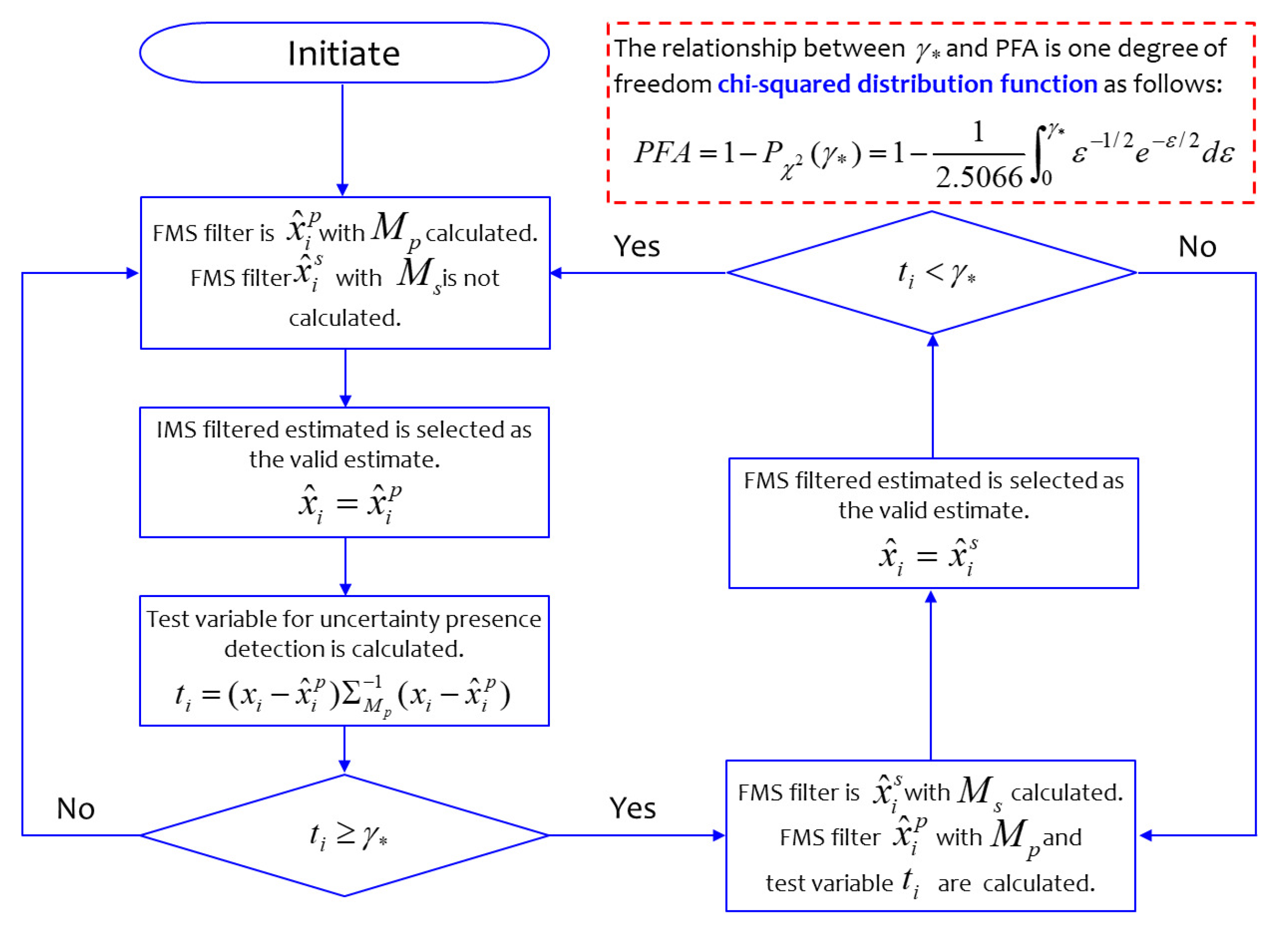
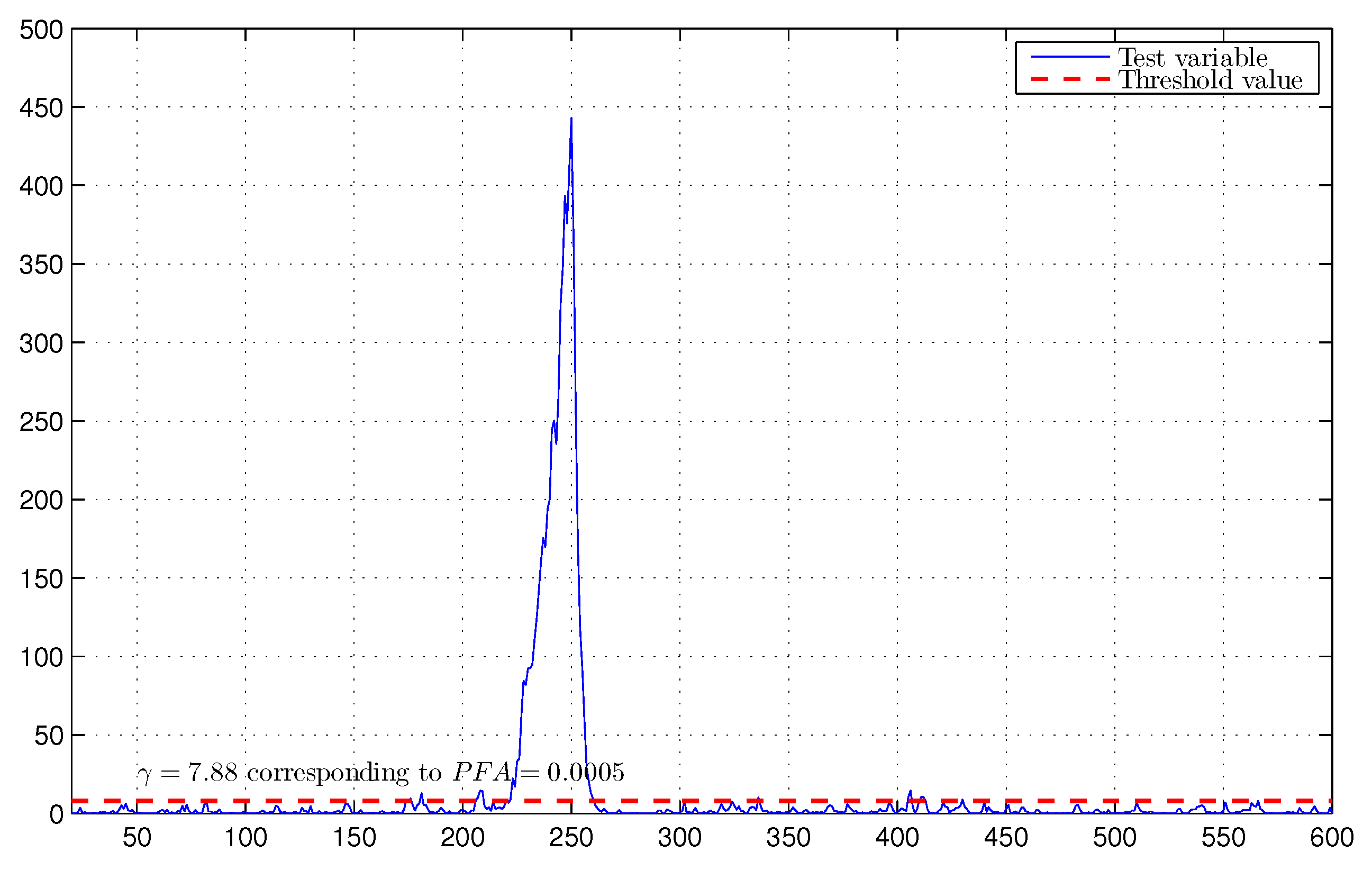
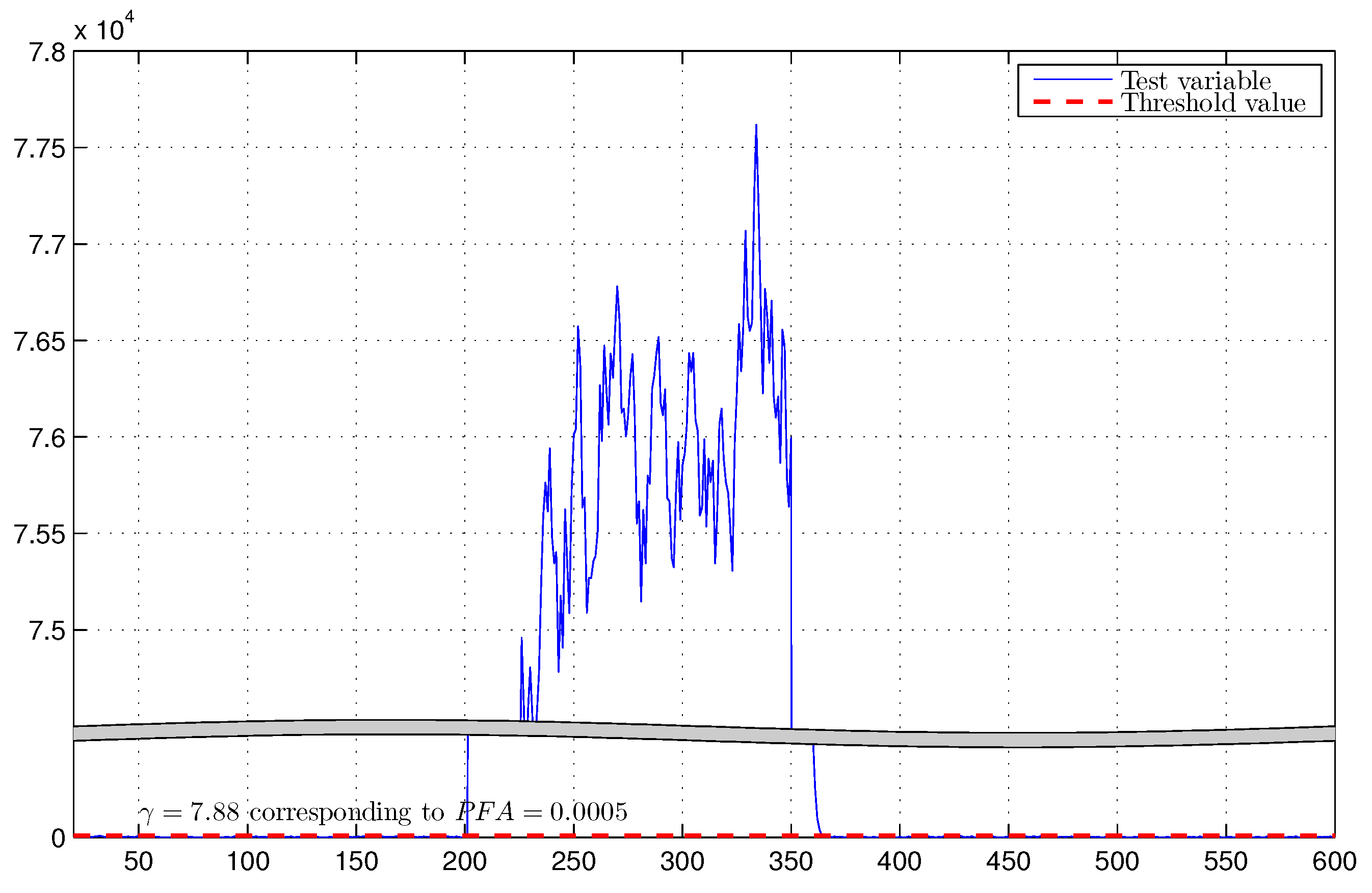
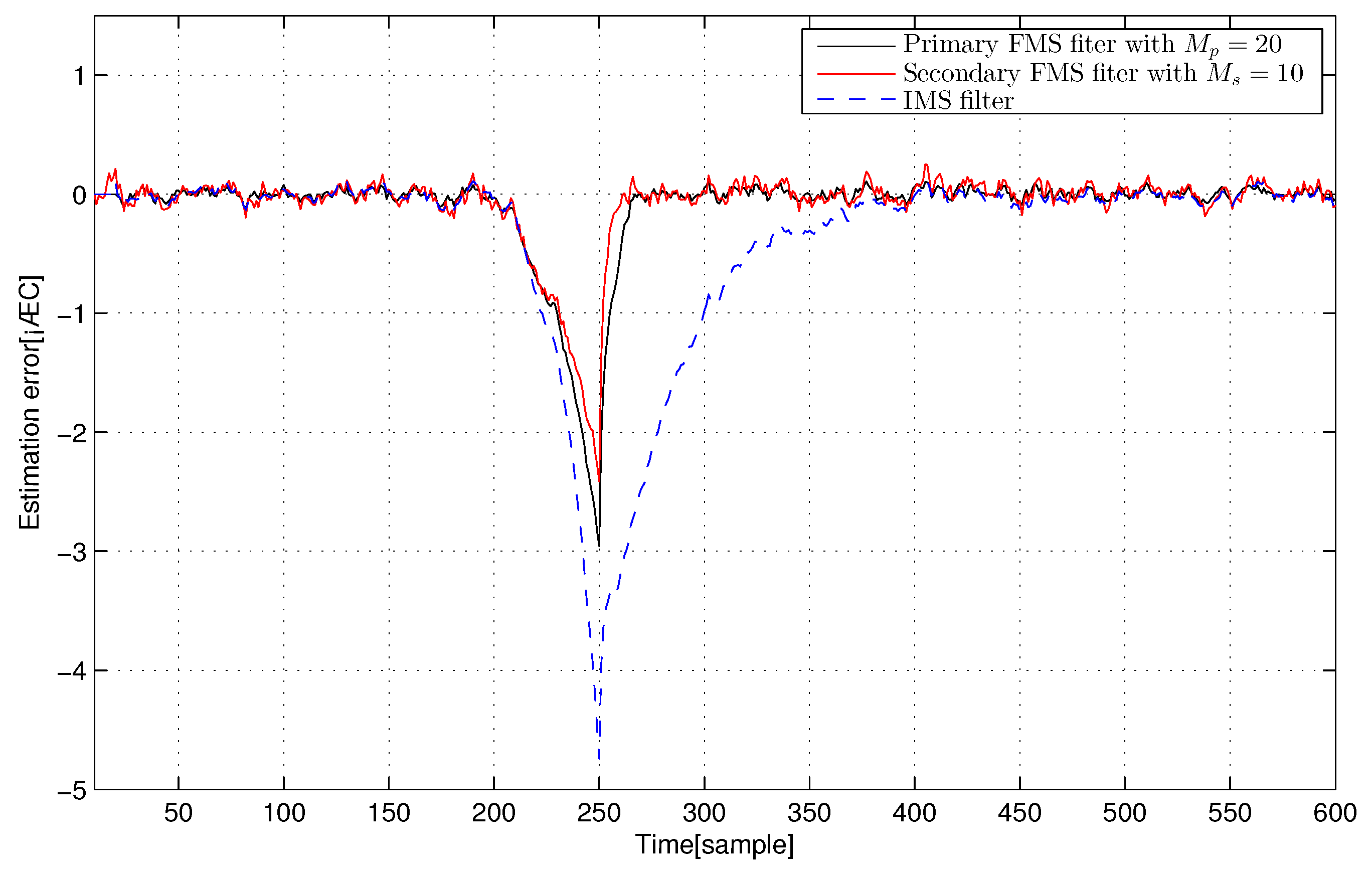

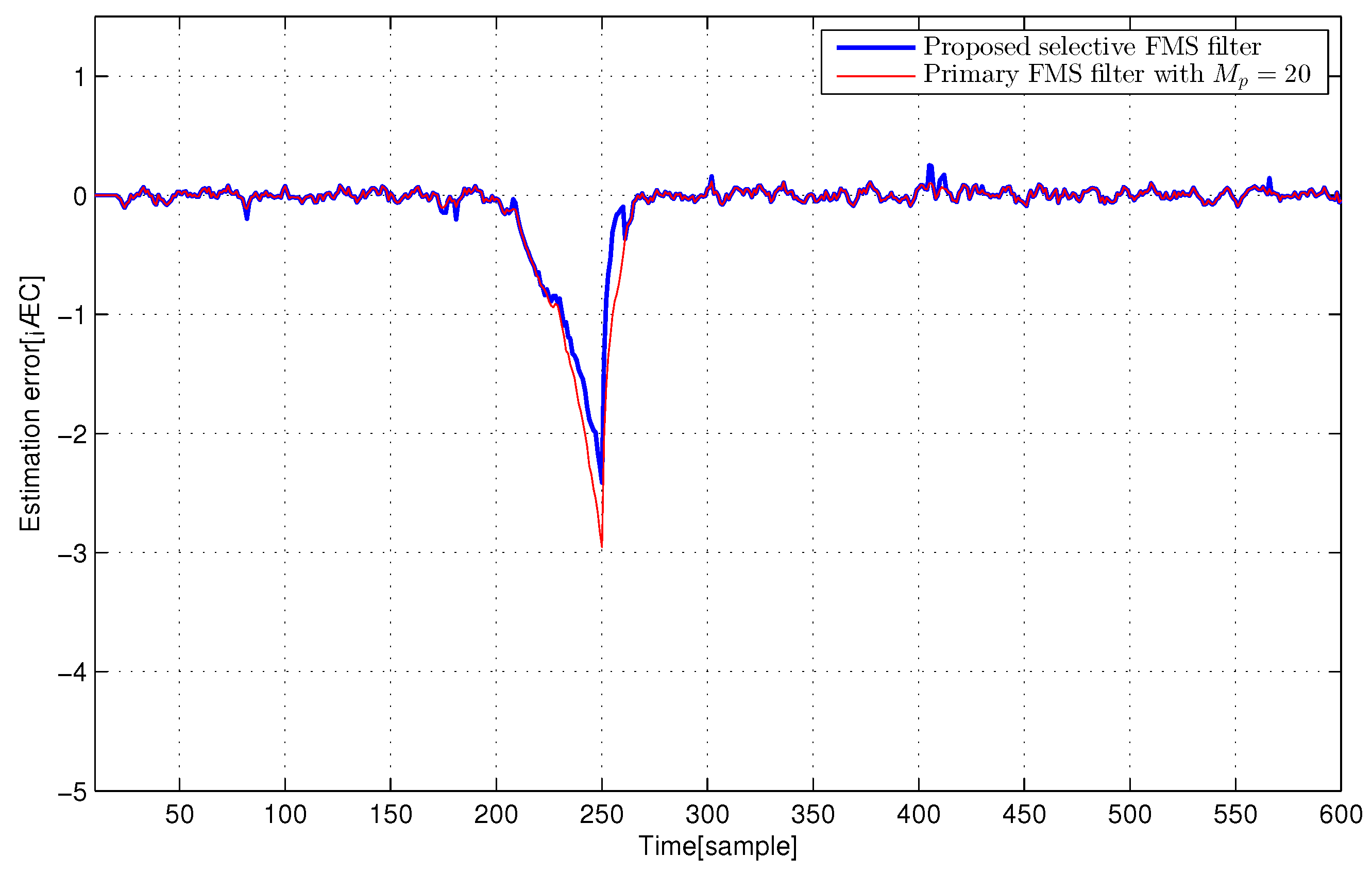
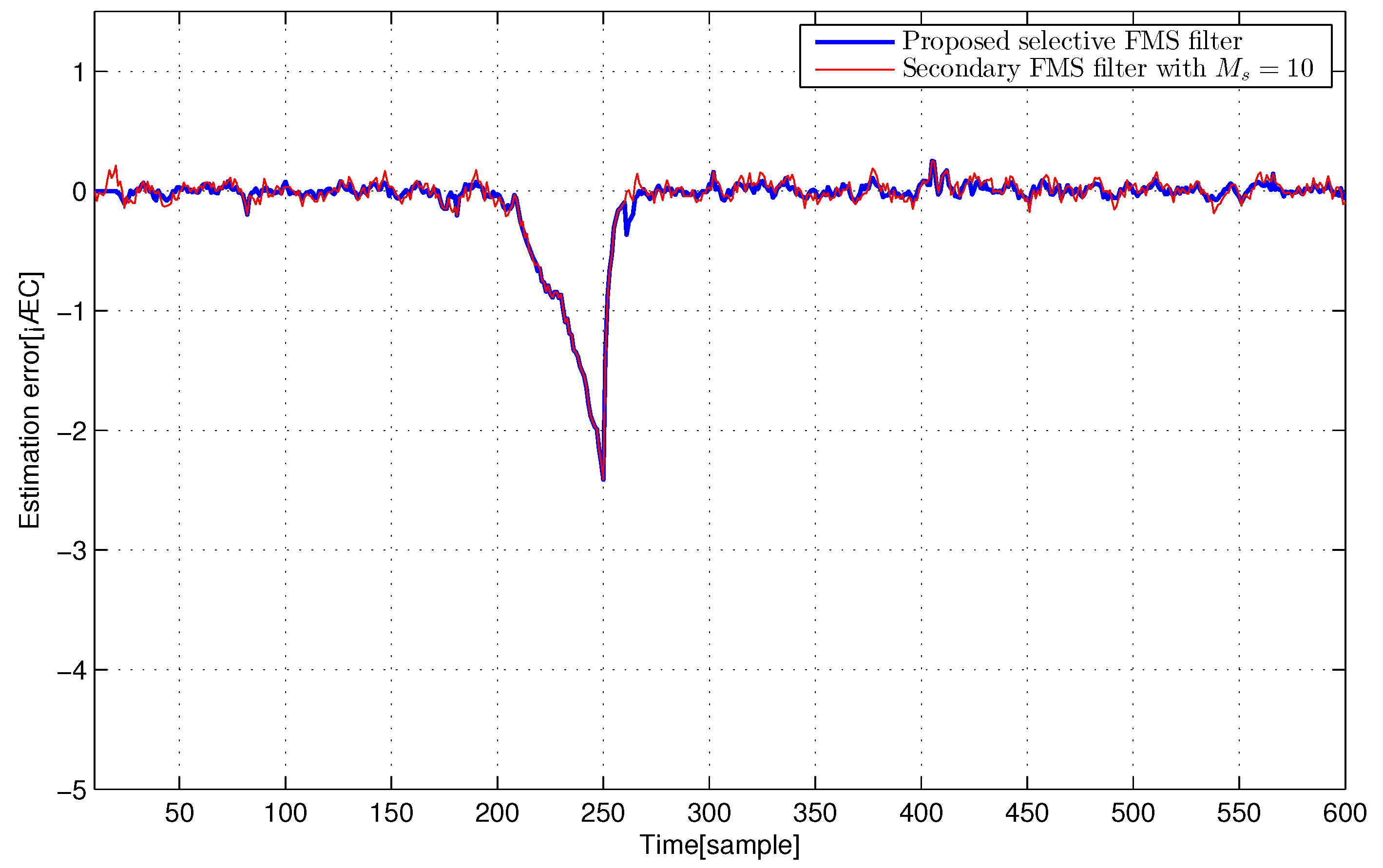
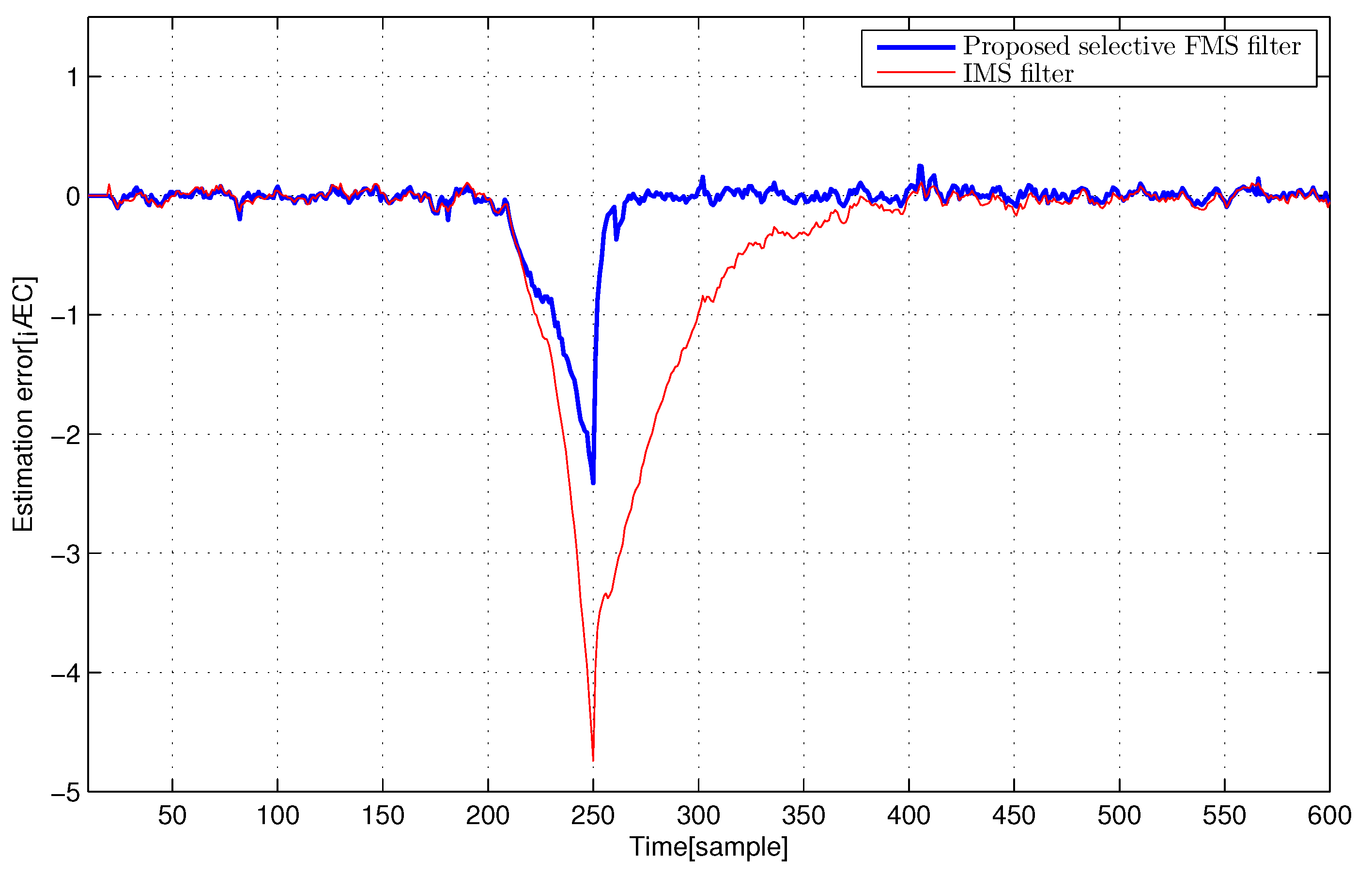
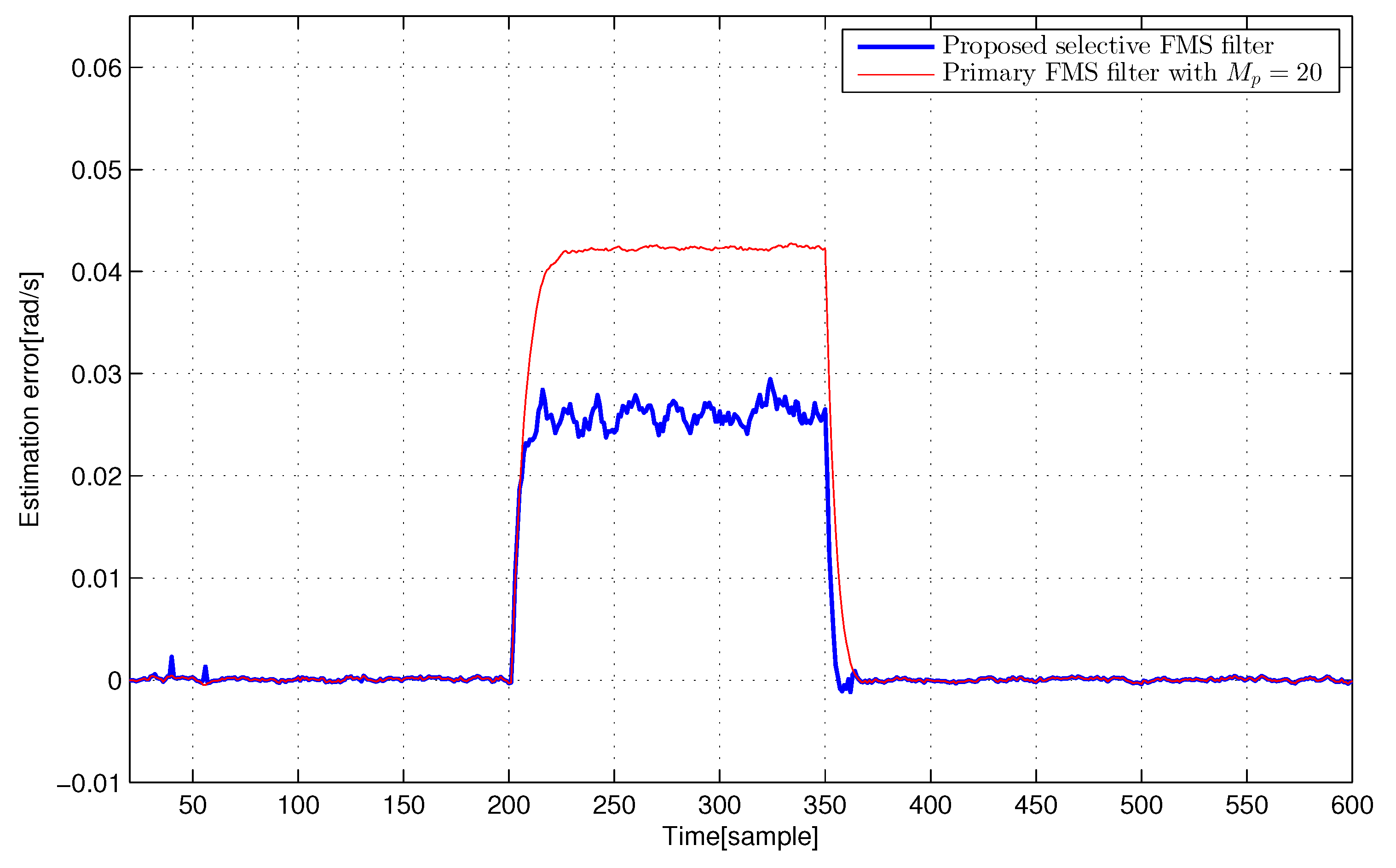
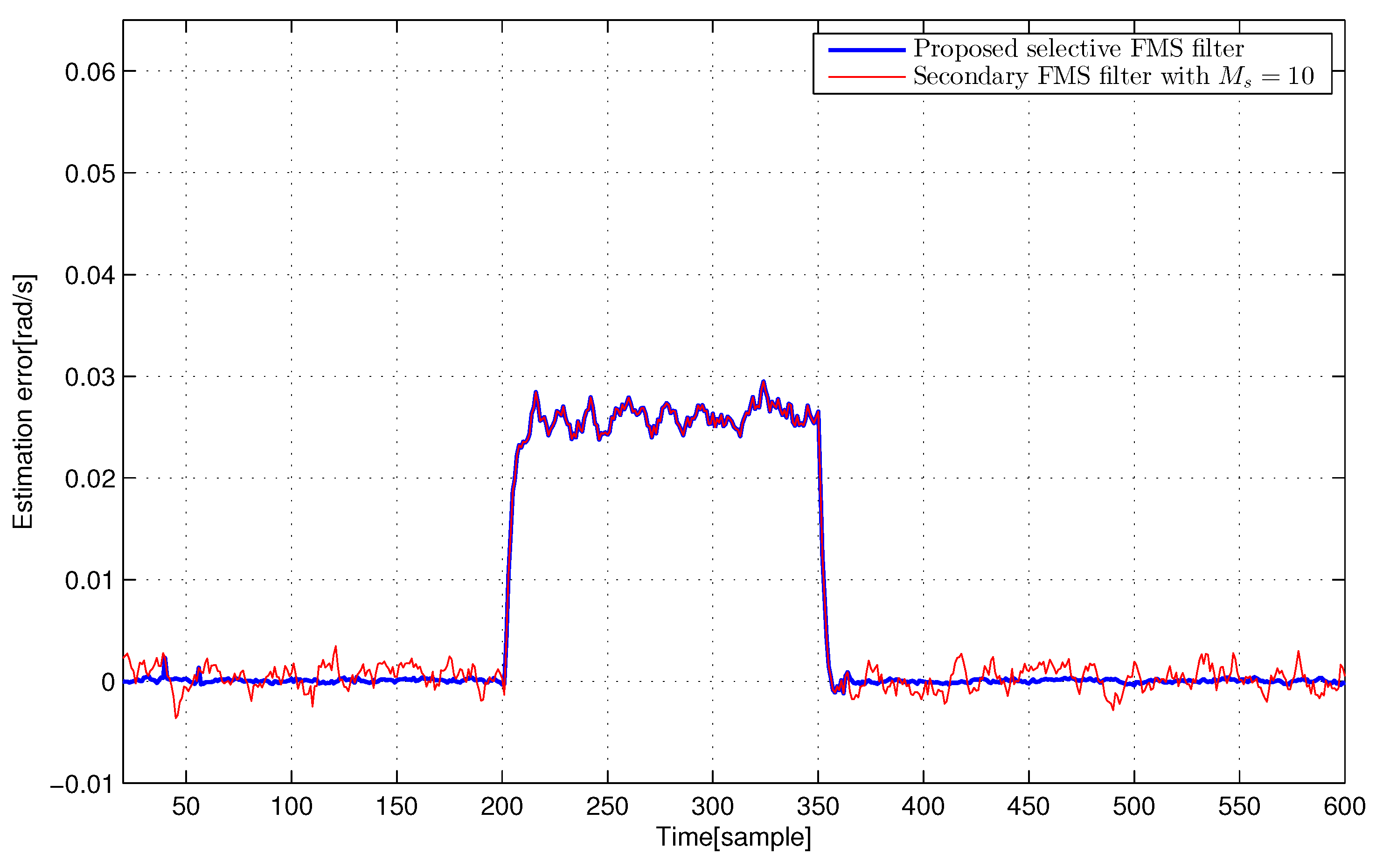
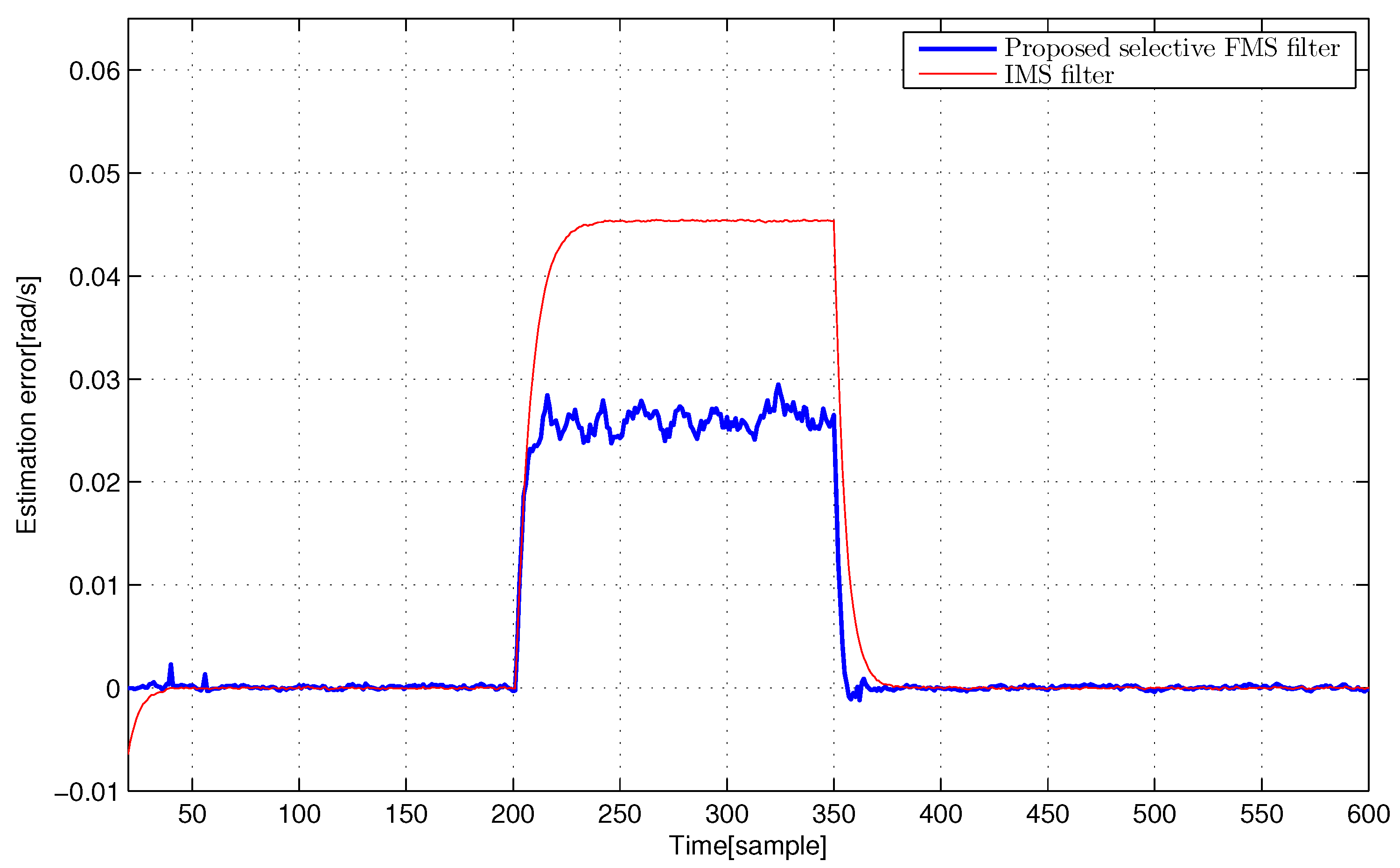
| IMS (Kalman) | Primary FMS | Secondary FMS | Selective FMS | |
|---|---|---|---|---|
| F404 Gas Turbine Aircraft Engine | 0.0876 | 0.0309 | 0.0307 | 0.0263 |
| Electric Motor | 0.0025 | 0.0023 | 0.0016 | 0.0015 |
© 2019 by the author. Licensee MDPI, Basel, Switzerland. This article is an open access article distributed under the terms and conditions of the Creative Commons Attribution (CC BY) license (http://creativecommons.org/licenses/by/4.0/).
Share and Cite
Kim, P.S. Selective Finite Memory Structure Filtering Using the Chi-Square Test Statistic for Temporarily Uncertain Systems. Appl. Sci. 2019, 9, 4257. https://doi.org/10.3390/app9204257
Kim PS. Selective Finite Memory Structure Filtering Using the Chi-Square Test Statistic for Temporarily Uncertain Systems. Applied Sciences. 2019; 9(20):4257. https://doi.org/10.3390/app9204257
Chicago/Turabian StyleKim, Pyung Soo. 2019. "Selective Finite Memory Structure Filtering Using the Chi-Square Test Statistic for Temporarily Uncertain Systems" Applied Sciences 9, no. 20: 4257. https://doi.org/10.3390/app9204257
APA StyleKim, P. S. (2019). Selective Finite Memory Structure Filtering Using the Chi-Square Test Statistic for Temporarily Uncertain Systems. Applied Sciences, 9(20), 4257. https://doi.org/10.3390/app9204257





